In a grid down scenario, as basic as a thunderstorm knocking out your power, there a few priorities you’ll have for getting things moving at your house again. Depending on where and how you live, this list can vary, but typically involves food and water systems, communications, and lighting. These basic components are key to restoring a state of normalcy in your household. But without light sources readily at hand, you can’t even begin to get started on building on your other systems.
[the_ad_placement id=”in-text-1-type-r”]
Here we’ll take a look at a few simple home emergency lighting options, their pros and cons, and things that you can do prepare your household for common power failures, that can prove debilitating in the right (or wrong) circumstances.
Evaluate your emergency lighting needs
First off, you want to take a look at your home and its lighting requirements. We’re not talking about things you’d like to have, but rather, the areas in your home that will absolutely see traffic and need to be well lit. In addition, you want to cover things such as mobile light sources, in case you have to go outside and check the breaker box, or tend to livestock.
For most people the list of rooms they need lit, at least when in use, is a common living area (where in times of emergency, you might consider having family sleep to simplify matters), a bathroom and shower facility, and a kitchen. Anything else can be considered fairly secondary, unless of course you have other concerns that require special attention. Things you want to keep in mind are particularly pets that require light as a heat source, children who may be afraid to sleep in the dark, windowless hallways, etc.
Once you have your list, begin by assessing the type of lighting you’ll need into two categories: mobile and stationary. Is it possible you’ll need to go outside and mend a fence in the dark? If someone is injured, do you have an adequate mobile light source to give them medical attention?
As far-fetched as some of these ideas may seem, when you’re without power, there’s little getting around it without first having an emergency light system to fall back on: no light, no repairs. Get it on paper, and get prepared.
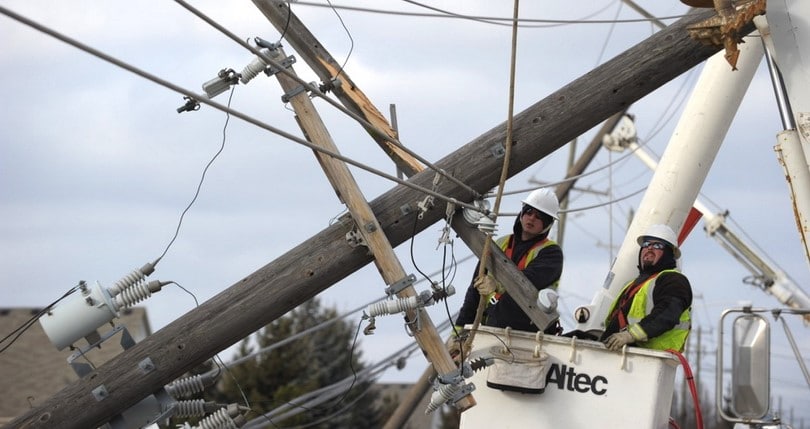
Working with what you have: power sources
The greatest challenge to overcome in this scenario is of course, establishing a reliable, preferably renewable power source. In the case of power outages, you never know how long you’re going to be out of commission-it could be a couple of hours, or a couple of weeks. I’ve dealt with both, and the latter is particularly frustrating and unappealing if all you’re packing are scented candles and dollar store flashlights.
However, I write this article under the assumption that like me, you’re not a millionaire, and can’t afford to go out and slap solar panels on your roof or put in a windmill. Below are some basic power/fuel sources you can look to for lighting, depending on what you actually have on hand, rather than what you’d like to. Remember, you needed these systems yesterday. No sense in dragging out the planning process even further with unnecessary financial burdens.
Wood-fireplaces, wood stoves, fire pits
This category is largely dependent on the type of home you have, and obviously has it’s constraints. If you live in an apartment, chances are you don’t have a fire pit in the back yard. However, for those blessed with the equipment to make this option a reality, wood can be a great source obviously not just for light, but for heat, which gives it high points in my book as a dual purpose fuel. That coupled with the fact that wood is often very cheap or free makes it a great option for those suited to its use.
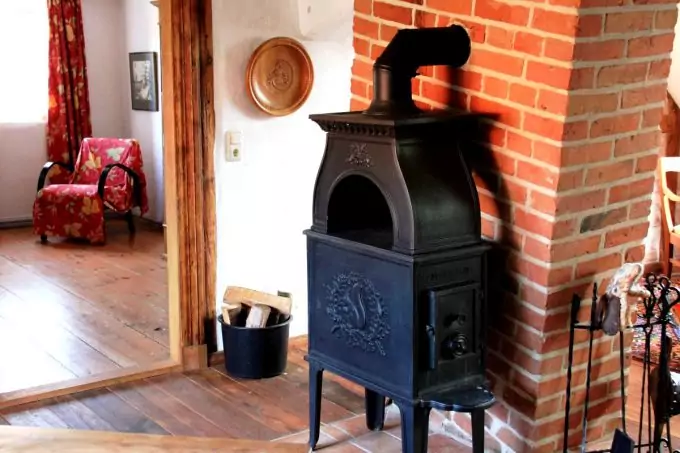
If you have a woodstove or fireplace, make sure you always have a wood supply on hand, regardless of the season. Though fire isn’t the best light source, it can provide just enough to light a common area, and can definitely add a pleasing ambience to a dull powerless night (think: fire + s’mores + story time=very happy kids).
We have a fantastic tutorial on how to build a woodstove if you’re the crafty kind of guy.
Compressed gases-propane and butane lanterns
If you’ve ever been camping, you might have used one of these little things. They’re incredibly handy, put out a nice strong light, and are very clean burning and odorless. However, this source loses points with me in that it’s not terribly renewable for your pocket book-those little canisters only last so long, around 4-9 hours depending on how bright you’re burning them.
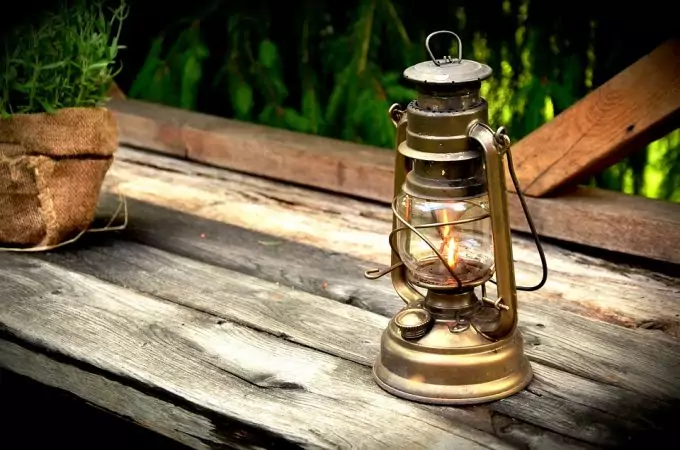
In addition to their inability to last long enough for emergency lighting needs, many people find a bit of an ick factor with the whole compressed gas part of it as well. Though they are very easy to use and quite safe, I will say from personal experience there’s always a bit of a ‘hold your face away, light the wick and hold your breath’ kind of moment. Leave the gas on too long as you fumble that grill lighter down to the wick, and you’ll likely get that heart-stopping sound as the collected gas ignites all at once.
You can see a wide collection of great lanterns running on fuel or electricity in our best camping lanterns article.
Electricity-batteries, generators, battery boxes, solar, manual
This one’s a pretty broad-ranging category, just because there are so darn many options available these days. The great thing is, lights these days require very little power, particularly our delightful friends the LEDs. So really, any one of these options are perfectly viable for meeting emergency lighting needs. The question is, how versatile do you want them to be (I’m lookin’ at you battery boxes; more on these later), and how economically viable are they for you.
Where batteries are concerned, I would only buy the rechargeable ones, because anything other than that is an absolute money pit, even if it’s just for flashlights.
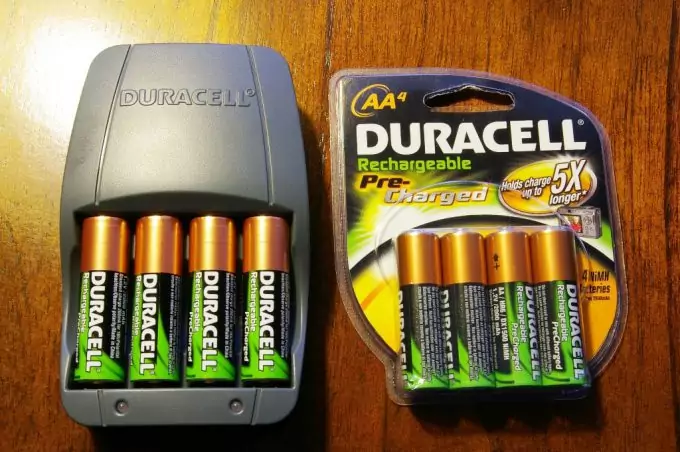
Get you some chargers, and have them ready to go all the time. But as soon as the power goes out, remove them, because they lose their charge if they sit in a dead outlet. It’s definitely an investment for anything of a substantial amount, but much more work it than throwing away and replacing countless AAs.
[the_ad_placement id=”in-text-2-type-r”]
Generators are amazing in that they can power whatever you really need, not so amazing in that they require both the costly purchase of a generator (if you don’t already have one), and gasoline to run them. No gas, no power. There are smaller products on the market but they are only designed for charging small devices like phones and maybe a tablet. You can see some great models that we picked and reviewed for you.
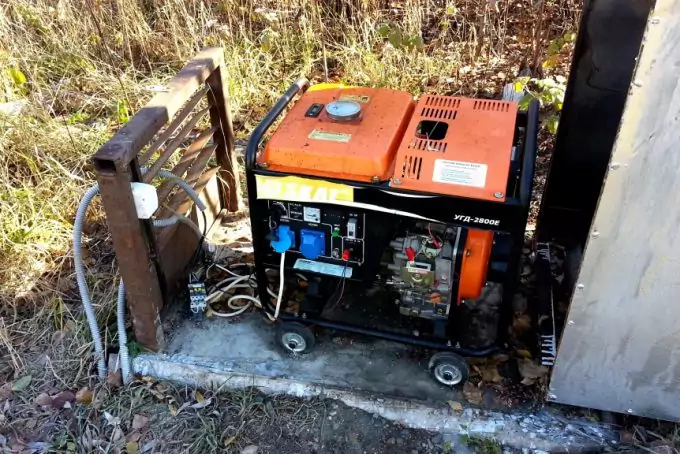
Battery boxes are definitely my favorite option, not just for lighting, but for really anything you may need them for. All you need is a collection of old (but decent) car batteries, a power inverter, some jumper cables, and you’re set. Maybe a big tough toolbox to put it all in if you’re like me and hate dusting around jumper cables, but really, super simple set up, and lots of applications. We’ll go more into this one later, and I’ll give you some details on how you can make your own.
Solar power needs no introduction, just specialized equipment that not everybody may have. However, its renewability is undeniable, making it great for those scenarios where you just have no clue how long you’ll be without power. Just make sure you’re not banking on sunny days on the day of your needs, and have some batteries already charged and ready to go. We put together a great selection of solar powered generators that may be interesting to check out.
Manual power is a little dated, but trust and reliable. I’m talking here about those crank lights that turn your good old fashioned elbow grease into electricity, and light. Perhaps not the most convenient option, they are nonetheless reassuring to have around, and quite cheap. Make having a few of these a staple in your house.
Don`t forget about candles
This one’s an old staple of the power outage scenario. However, it should go without saying that not only is it a very temporary measure (have you ever noticed how fast those $30 aromatherapy ones burn down?), it’s a pretty poor source of light to boot.
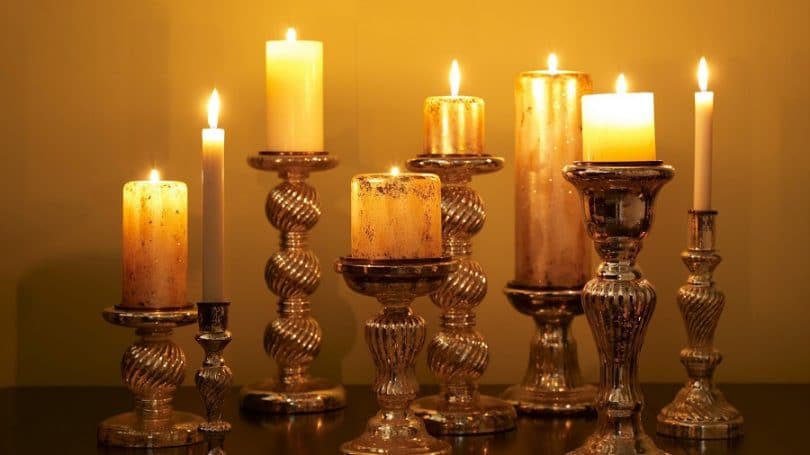
And of course, they’re pretty unsafe too, with hot melting wax and an open flame, whether you have kids or not. Bottom line, they’re nice to have around, but I would never consider these an emergency lighting go-to.
Principle for preparedness-stashing
Once you have evaluated your energy availability and the types of emergency lighting you’ll be employing, start stashing. Think of strategic places around the house-preferably in every room-where you can stow a portable light source. This way, if someone is in a crowded closet or an upstairs bathroom when the power fails, light is close at hand, and risk fewer accidents.
However, make sure the other inhabitants are actually aware of where you’re putting these things, and don’t expect them to remember 15 different oddball places in the heat of the moment. Try keeping the places for light consistent, despite the room, that way everyone can remember where to reach for a flashlight (keep in mind, the power will be out, they’ll be feeling around in the dark for it).
I particularly love mounting things like these on walls and inside cabinet doors. You don’t have to worry about it getting knocked around under the kitchen sink amidst detergent bottles and scrub brushes, and it’s tidy and out of the way. If your light source doesn’t have anything to hang it from, jerry-rig something in place.
Drill a hole through a plastic housing if you have to. Zip ties are wonderful for impromptu stuff-hanging. Get some hooks that can handle the weight of whatever you’re hanging (stick on hooks won’t work for a flashlight full of D batteries), and start moving from room to room.
Another great option for your “in every room light source” are those wonderful little flashlight nightlights. You’ve probably seen them at places like Home Depot. Delightfully simple, basically these little LED wonders function as nightlights. Then, if the power goes out, the light can be disconnected (usually a little flashlight) to be used around the house. They can be a little steep when you’re talking about buying a dozen of them ($10-$20 apiece usually), but useful nonetheless.
When you’re done, go through each room of the house with your family and physically show them where they can find the emergency light. Behind doors or inside cabinets, wherever they are, just be sure they’re easy to get to, and that everyone understands they absolutely have to stay there.
Stationary light sources
Once you have all of your mobile light sources in place, you may want to get a more stationary emergency lighting system in place in your common area. This is a matter of personal preference, but I’ve found in the past that it’s tremendously convenient to have a large work light rigged up and ready to go in case of power failures.
Whatever you wind up using, there’s no sense in getting something frilly that will break when someone knocks into it in the dark. Get a big LED work light of some sort, the kind you may see in a mechanic’s shop or something. You want it to be functional, and if it’s just ugly as sin, do what I did and hang it on a wall behind a door so you never have to look at the darn thing.

Nearby to your stationary light-or better yet, connected and ready to go-have your power source. Whether that’s an extension cord running to your generator, or a power inverter, either way, get it set up for the long term. This means finding a way to keep any wires or electrical components stowed, both for aesthetics and for safety. The last thing you want is your toddler playing with the spark plugs.
[the_ad_placement id=”in-text-3-type-r”]
We use a battery back-up box for our stationary light source, and have all the components in a large, latching, plastic tool box we picked up at Wal Mart. However, bear in mind that if your power source is heavy and you intend to move it, you’ll want something sturdier that can handle the weight of, say, a half dozen car batteries.
Once you have all this set up, again, walk your family through its components, and make sure everyone knows how it works. Emergency prepper though you may be, you may not always be there to make sure things get up and running, so it’s important that everyone in the household have a grasp of how to safely use the system. Write up a manual and put it in the area if need be.
How you can build your own battery bank
So I keep telling you about how much I love using a battery backup box for our home emergency lighting. This thing is so versatile, and much cheaper to build than buying a generator. If you’re looking for an on demand power source that doesn’t just power lights, but whatever you have the juice for, this is something you’ll want to look into putting together.
Basically, it’s a bank full of car batteries (although I hear people use all sorts, deep cycle marine even), rigged up with jumper cables to a power inverter that will allow you to use the power with anything with a 12V cord in your home. Put it all in a sturdy container or cart with some extension cords, and you’ve got a great emergency power supply.
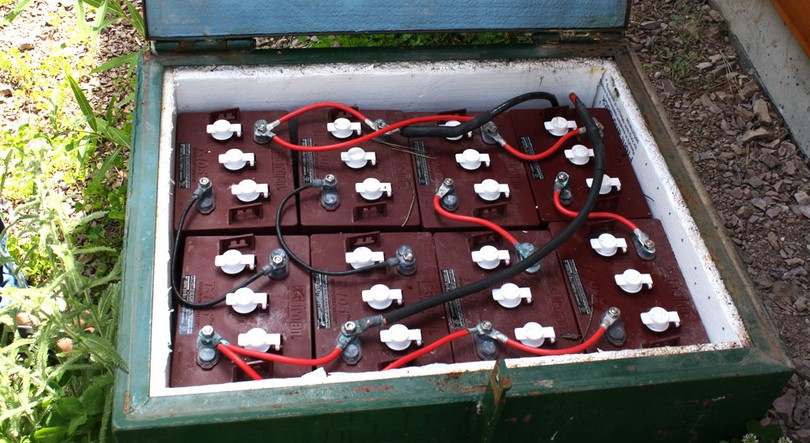
To get yours started, get your hands on some used batteries. You can find these in agricultural supply stores used around $50. As long as they can still charge to about 70-80%, they’ll work for your purposes. The Power inverter can be a little on the steeper side, but is such a useful tool to have around, it really is worth the investment (keep in mind, they invert power from solar panels too!). I think we paid around $150 for our 12V inverter, and we use it all the time. Totally worth the money.
The idea behind this is that a disconnected battery holds no charge, so you want to keep them hooked into the power inverter, which will be hooked into your home power supply, at all times. This will keep the batteries fresh, so when the power goes out, they’re charged and ready to go. At that point, you just unplug the inverter from your wall, and start running whatever you need to power into it instead.
This is a very basic rundown of how these things work, and there are about 50 tutorials online, each with their own methodology, that can show you how to build one. But with this most basic design, you can meet lighting needs in case of emergencies.
Long story short: be prepared
When we talk about emergency preparedness, a lot of stereotypes come to mind-people in tin foil hats listening to paranoia radio in the middle of the woods. But these are the very basic, very common emergencies that so many of us are aware of, yet continue to neglect very basic preparations for.
It doesn’t take a ton of money or an extreme survivalist’s mentality to figure out that when (not if) the power goes, light is tantamount to everything else. You can’t see your kid’s medicine bottle, you can go check the breaker box, you can’t even find the toilet paper without it. Start here, and begin branching out to the next thing you can improve your preparedness on.
Having one flashlight under your kitchen sink with 3 year old batteries in it isn’t going to do you much good if your power is out for more than a few hours. Take the time, take the steps, and the next time that big thunderstorm hits, rest easy knowing you’ve got this.




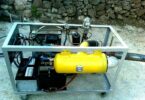

Excellent article! thanks for it! Especially I like paragrapgh about self made battery bank. I guess such system is cheaper then to buy professional emergency lighting! You said that it costs $50 – it’s amazing. I believe that it is great price. I’ve just look on some components and I guess I cannot buy emergency lighting kit for less then $100!
Solar lighting invaded the landscaping section of Ikea and I find out that they can provide emergency lighting during power outages given that they are fully charged. They are pretty cost effective and the bulbs can easily be replaced.
Thank you for sharing this with us, Robert!
Yepp, always charge your battery-loaded tools, especially flashlights! Better if you invest in rechargeable batteries and extras, too. Candles are good and all but they only cover small areas, are prone to accidents and their flame eventually gets covered by wet wax until it cools. So pack on emergency lights (even small night lights) but keep candles for extended periods of power outage.
You certainly need emergency lights, especially when going off-grid, you never know when a thunderstorm will hit.
Very insightful article. Although we do have several mod available, somehow “old School” kerosene storm lantern is everyone’s favorite.
Keep up the great work!!
The old ways are always the best, Djani. As far as emergency lighting is concerned, kerosene storm lantern is a reliable alternative.